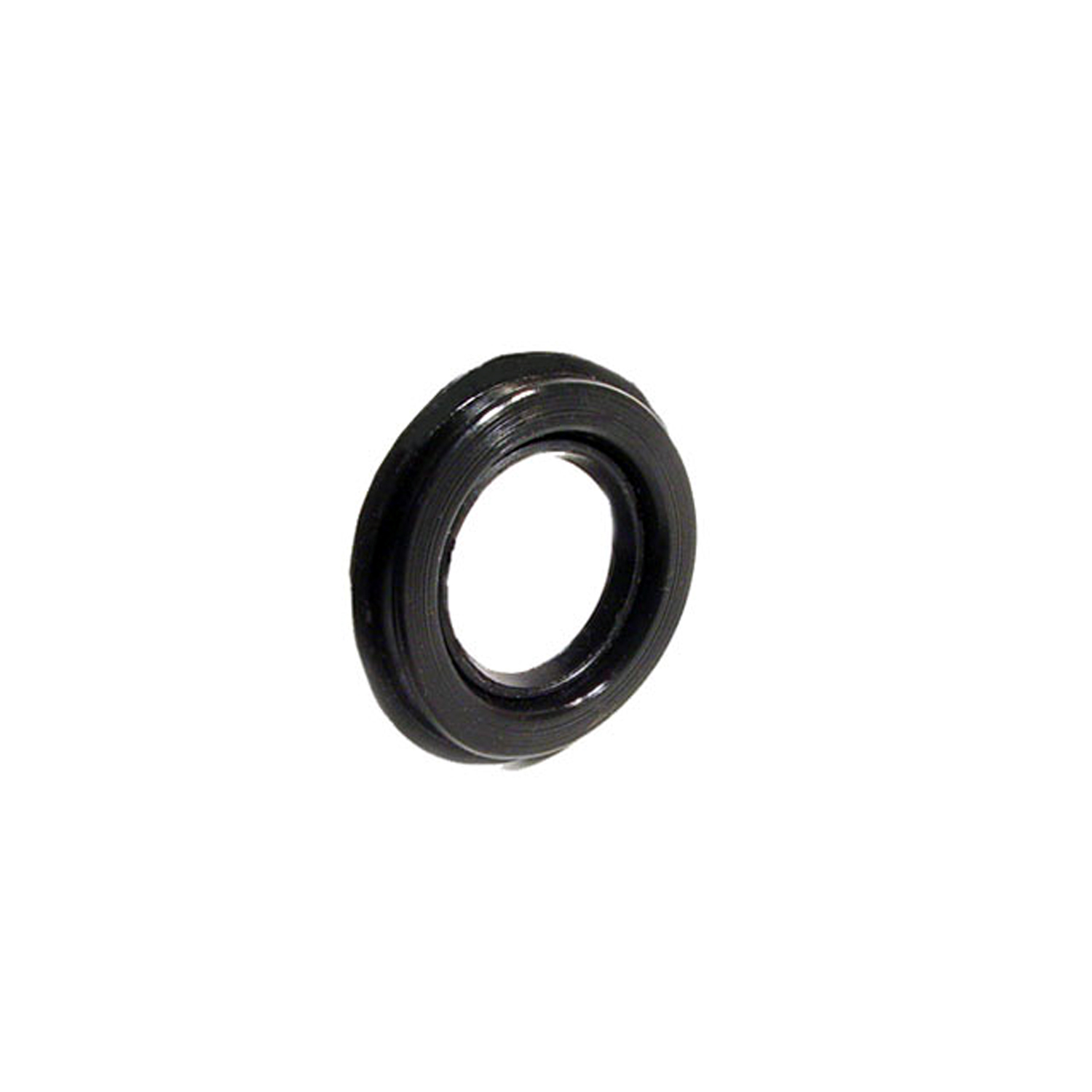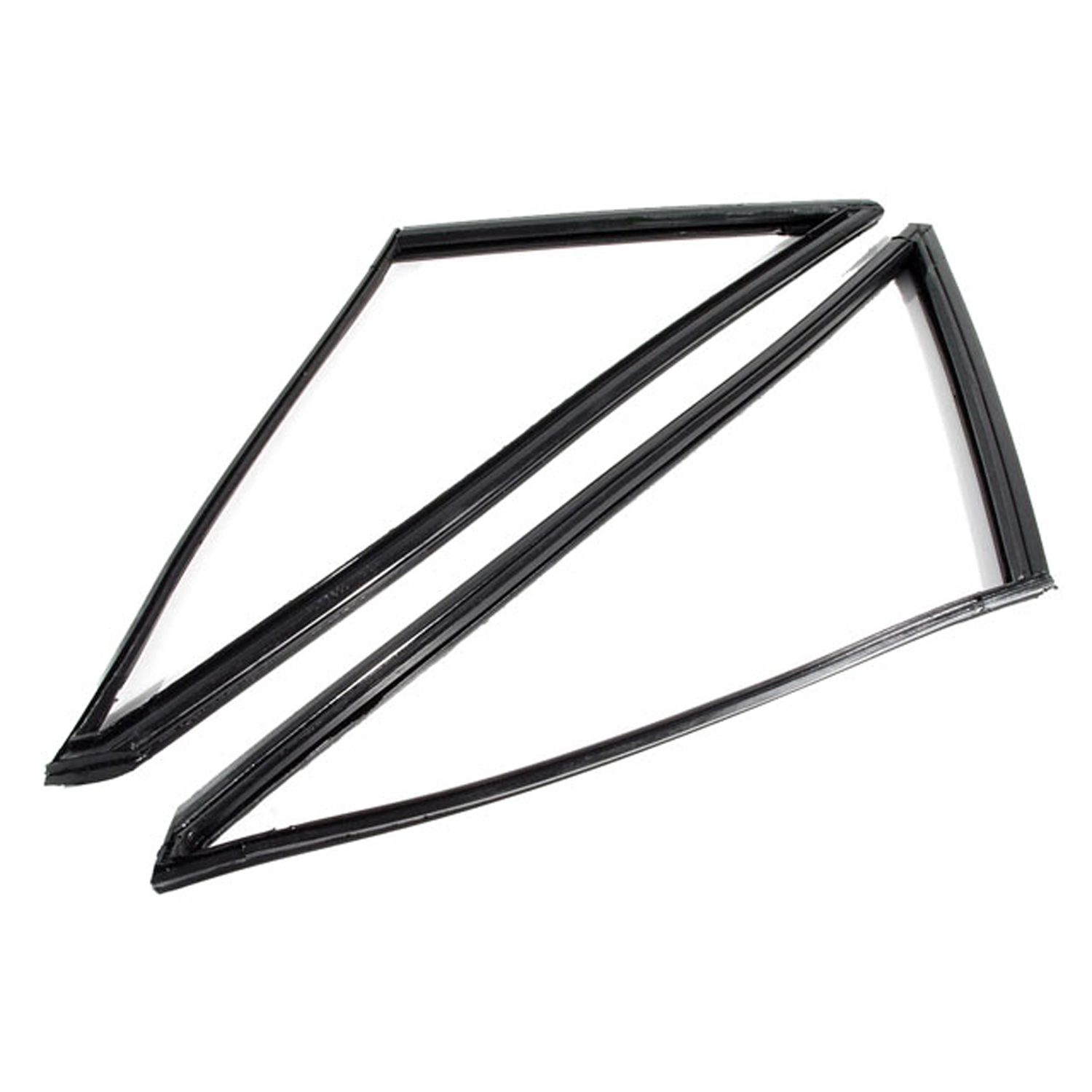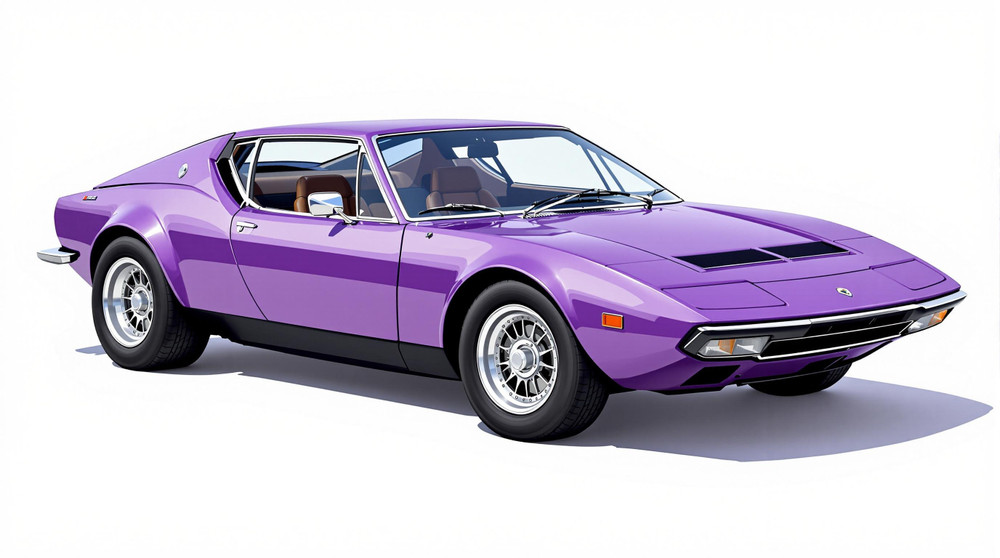Image of 1972 Detomaso Pantera, Note: These illustrations use artistic license and may differ from actual historical models.
Performance Metrics
Fundamental Metrics
Emotional Appeal
MMP Rating
| Engine Specifications | |
|---|---|
| Engine: | Ford 351 Cleveland V8 |
| Displacement: | 5.8L or 5766 cc |
| Horsepower: | 330 hp |
| Torque: | 380 lb-ft |
| Compression Ratio: | 11.0:1 |
| Ignition System: | Electronic Ignition |
| Cooling System: | Liquid-cooled |
| Performance Specifications | |
| 0-60 Time: | 5.5 seconds |
| 1/4 Mile Time: | 13.5 seconds |
| Top Speed: | 140 mph |
| Transmission and Drive | |
| Drive Type: | Rear-wheel drive |
| Transmission Type: | 5-speed manual |
| Fuel and Efficiency | |
| Fuel System Type: | Carburetor |
| MPG: | 15 mpg |
| Dimensions and Brakes | |
| Brakes: | Disc brakes |
| Wheelbase: | 99 inches |
| Weight: | 3,100 lbs |
Note: Specifications for classic cars are given to the best of our ability, considering the limited and variant data available.
Unleashing the Roar of Italian-American Synergy: The 1972 DeTomaso Pantera
The 1972 DeTomaso Pantera is not just a car; it's a roaring emblem of cross-continental collaboration. Born from the ambition of Argentine-born Alejandro de Tomaso, this exotic sports car blends Italian design finesse with American muscle power. The Pantera, which translates to "Panther" in Italian, was manufactured by DeTomaso of Modena, Italy, and sold through Ford dealerships in America. This unique fact alone sets the stage for a vehicle that became a cult classic, known for its appearance in Elvis Presley's garage and its cameo in the 1971 film "The French Connection."
Design and Innovation
The 1972 Pantera's exterior styling was penned by the legendary Tom Tjaarda at Ghia, featuring a low-slung profile and aggressive wedge-shaped lines that screamed speed even at a standstill. Inside, the cabin was adorned with a mix of luxury and simplicity, utilizing materials like leather and brushed aluminum to convey a sense of Italian craftsmanship. For its era, the Pantera boasted impressive technological features such as power windows and air conditioning – amenities not common in all sports cars of the time. The color palette ranged from vibrant reds to deep blues, with Racing Yellow being one of the most sought-after hues. While there were no drastic body style variations, the early chrome bumper models are particularly iconic.
Historical Significance
The DeTomaso Pantera stood out for its mid-engine layout – a configuration typically reserved for high-end exotics – making it an engineering marvel among American offerings. Its introduction helped popularize this setup and influenced a generation of sports car design. The Pantera's blend of Italian elegance and American reliability was unprecedented, paving the way for future collaborations between different automotive cultures.
Performance and Handling
Underneath the hood lay a Ford 351 cubic inch (5.8-liter) Cleveland V8 engine that propelled the Pantera to a top speed of around 159 mph with an acceleration sprint from 0-60 mph in just 5.5 seconds – remarkable figures for its time. On twisty roads or when navigating through bumps, the car's stiff suspension setup provided direct feedback to the driver, delivering an unfiltered driving experience. The roar of the V8 combined with the tactile sensation of gear shifts made driving a visceral event.
Ownership Experience
The Pantera was versatile enough to be used as a daily driver or as a weekend showpiece. While reliability was better than many Italian exotics of its era due to its Ford powertrain, maintenance could still be challenging due to limited access to certain engine components. However, for those willing to tackle these quirks, ownership was rewarding.
Fun Facts
A lesser-known tidbit is that Elvis Presley once shot his Pantera after it refused to start, leaving a bullet hole as proof! Although not known for setting official records, the Pantera did set sales records for DeTomaso with over 5,500 units sold during its first five years on the market. Criticisms often centered on ergonomics and build quality issues typical of hand-assembled Italian cars.
Collector's Information
Today, collectors cherish the 1972 DeTomaso Pantera for its rarity and historical significance. With approximately 7,260 units produced during its entire production run from 1971 to 1991 (with early '70s models being most coveted), availability is limited. As for value range, well-preserved examples can fetch anywhere from $80,000 to over $200,000 depending on provenance and condition. The market trend shows appreciation due to rising interest in vintage exotics.
Conclusion
The 1972 DeTomaso Pantera stands as a testament to bold innovation and international collaboration in automotive history. It's more than just metal, glass, and rubber; it's an enduring legacy that continues to captivate enthusiasts around the world with its unique blend of style and performance.
1972 Detomaso Pantera Catalog of Parts
 1972 DeTomaso Pantera Brake Caliper Dust Boot. For front brakes. 1-7/8" O.D-SM 65-FBrake Caliper Dust Boot. For front brakes. 1-7/8" O.D. Each
1972 DeTomaso Pantera Brake Caliper Dust Boot. For front brakes. 1-7/8" O.D-SM 65-FBrake Caliper Dust Boot. For front brakes. 1-7/8" O.D. Each 1972 DeTomaso Pantera Vulcanized Front Fixed Quarter Window Gaskets-VQT 7600Vulcanized Front Fixed Quarter Window Gaskets. 20-5/8" x 10-1/2" x 14-3/8". Pair
1972 DeTomaso Pantera Vulcanized Front Fixed Quarter Window Gaskets-VQT 7600Vulcanized Front Fixed Quarter Window Gaskets. 20-5/8" x 10-1/2" x 14-3/8". PairWhy Choose Metro?
For over 100 years, Metro Moulded Parts has been the pinnacle of quality in classic car restoration parts. Our commitment to precision and authenticity in every component ensures a perfect fit and an OEM-level appearance.
- Expert Craftsmanship & Quality: Each part is a testament to our dedication to reliability and perfection, crafted from original designs and thoroughly tested.
- Advanced Technology: We use cutting-edge techniques to create flawless, long-lasting parts that surpass others in performance.
- SuperSoft Sponge – The Ultimate Door Seal: Not only are our door seals 30% softer than competitors', but they're also guaranteed to never leak. They effectively reduce wind and road noise, enhancing your classic car's comfort and driving experience.
- Proudly American: Our parts are a product of American craftsmanship, made in the USA with a spirit of excellence and heritage.
- Unrivaled Warranty: We back our products with a 30-year industry-leading warranty, a testament to our confidence in their quality.
Join us in preserving the legacy of classic cars with parts that are crafted for perfection, not just made.

